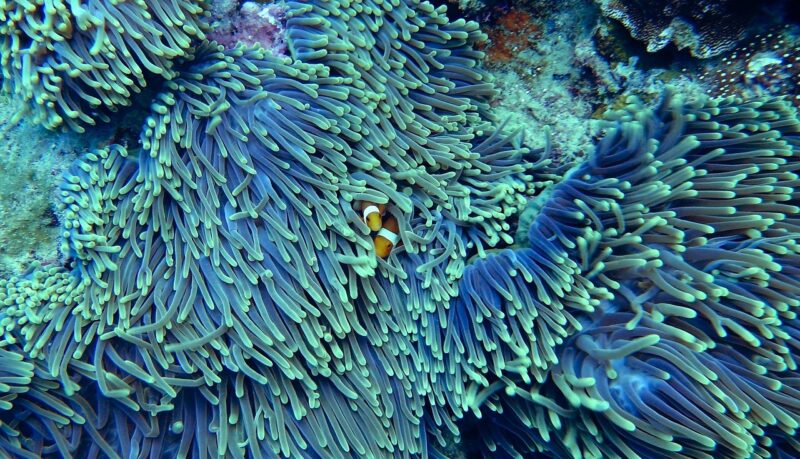The Formation of Coral Atolls: How Reefs Become Islands
November 16, 2024

Coral atolls are fascinating geological structures formed in tropical oceans that provide a unique habitat for diverse marine life. These natural wonders not only serve as beautiful diving spots but also play a crucial role in coastal protection, biodiversity, and climate regulation. In this article, we will explore how these intricate ecosystems are formed, their ecological importance, and the threats they face in a changing world.
1. Understanding Coral Reefs
To grasp the concept of atolls, it’s essential to first understand what coral reefs are. Coral reefs are communities of coral polyps—small animals—that secrete calcium carbonate to form a hard structure. These reefs thrive in warm, shallow waters, typically within the tropics, and serve as a foundation for diverse marine ecosystems.
Coral reefs generally fall into three categories:
- Fringing Reefs: These are the most common type, growing directly from the shore and typically found along coastlines.
- Barrier Reefs: Located farther from the shore, these reefs are separated by a deep lagoon and can be quite large, such as the Great Barrier Reef in Australia.
- Atolls: These are ring-shaped coral reefs that encircle a lagoon, either fully or partially, typically formed around a submerged volcanic island.
2. The Life Cycle of a Coral Atoll
The formation of coral atolls is a complex interaction of biological, geological, and oceanographic processes over thousands of years. Here are the primary stages in the life cycle of an atoll:
Stage 1: Volcanic Island Formation
The journey of an atoll begins with a volcanic eruption beneath the ocean’s surface. Over time, the volcano builds up a tropical island; its peak emerges above sea level.
Stage 2: Coral Colonization
As the island rises, coral larvae settle on the underwater slopes of the island. Because coral polyps are highly reliant on sunlight, they grow in the shallow waters surrounding the island, progressively creating a fringing reef.
Stage 3: The Growth of Barrier Reefs
Once the coral reef establishes itself and the island begins to erode due to wave action, the coral continues to grow upward and outward, forming a barrier reef. The process of reef growth can be significantly influenced by the food availability, water temperature, and other environmental factors.
Stage 4: Lagoon Formation
As erosion steadily wears down the volcanic island, a lagoon forms in the center where a body of still water develops, sheltered from the ocean’s waves by the surrounding reef. Over time, the island can become completely submerged, leaving just the reef and lagoon behind.
Stage 5: The Emergence of Atolls
With the original volcanic island long gone, what remains is a ring of coral that may occasionally be surrounded by sandbars, islets, or cays. This completed structure is what we call a coral atoll.
3. The Ecological Importance of Coral Atolls
Coral atolls are not just geographical marvels; they also hold significant ecological value:
- Biodiversity Hotspots: Atolls support a wide variety of marine life, including fish, mollusks, crustaceans, and sea turtles. These ecosystems represent some of the most biologically diverse environments on the planet.
- Coastal Protection: The reef structures act as natural barriers against storm surges, reducing damage to coastal areas and offering protection to human settlements nearby.
- Research and Education: Coral atolls are vital for scientific research, offering insights into marine biology, climate change, and evolutionary processes that govern this delicate ecosystem.
- Supporting Fisheries: Many fish species rely on atoll ecosystems for breeding, feeding, and sheltering, making them essential for local fishing economies and food security for nearby communities.
4. Threats to Coral Atolls
Despite their ecological significance, coral atolls face numerous threats exacerbated by human activities and climate change:
- Climate Change: Rising sea temperatures lead to coral bleaching, where corals expel the symbiotic algae they rely on for nourishment, severely impacting their health and survival.
- Ocean Acidification: Increased carbon dioxide levels result in more acidic oceans, which complicates the ability of corals to build their calcium carbonate structures, jeopardizing their future growth and stability.
- Overfishing and Destructive Practices: Unsustainable fishing practices and habitat destruction via coastal development can lead to a decline in biodiversity and damage the delicate reef ecosystem.
- Pollution: Runoff from agriculture and urban areas introduces harmful chemicals into the water, threatening coral health and the balance of the entire ecosystem.
5. Conserving Coral Atolls for Future Generations
Conserving these natural wonders is essential not only for maintaining biodiversity but also for preserving the livelihoods of communities depending on them. Conservation strategies include:
- Marine Protected Areas (MPAs): Establishing MPAs can help safeguard critical habitats and ensure sustainable practices to maintain healthy marine ecosystems.
- Restoration Projects: Efforts to restore damaged coral reefs involve coral gardening and breeding programs that enhance the natural recovery processes of the reefs.
- Education and Awareness: Raising awareness regarding the threats facing coral atolls and the importance of conservation can empower communities to participate in safeguarding their natural resources.
- Sustainable Practices: Implementing sustainable fishing and tourism practices can reduce detrimental impacts on the corals and keep ecosystems thriving.
Conclusion
Coral atolls are not only geological features of beauty but also essential ecosystems that support diverse marine life and provide vital services to coastal communities. Understanding their formation, significance, and the threats they face helps drive the urgent need for conservation measures to ensure that these remarkable structures continue to flourish for generations to come. By engaging in protective actions and spreading awareness, we can all contribute to the health and preservation of coral atolls worldwide.







